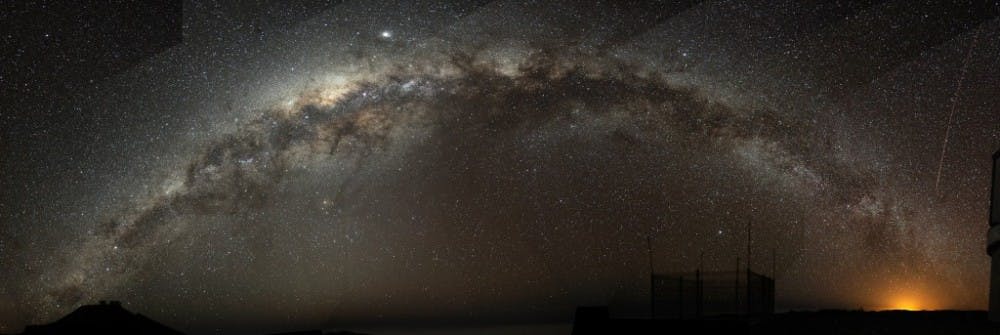The search for life outside of planet Earth has captivated science fiction writers, astronomers and society at large. However, the likelihood of finding such life is continually restricted by the limitations of technology and the sheer size of the universe.
Previously it was believed that the most likely location for potential planets similar to our own was within other galaxies. However, reaching the outskirts of our own galaxy is a current challenge that scientists face, so searching past our galaxy’s boundaries into other galaxies seems to be a nearly impossible feat.
Recently, Rosanne DiStefano and Alak Ray, her colleague at the Tata Institute of Fundamental Research in Mumbai, suggested that scientists turn their search to within our galaxy. They argue that globular clusters within the Milky Way may be a potential source of extraterrestrial life.
A globular cluster is a small ball, usually about 100 light-years across, containing up to one million individual stars. These cluster formations date back almost to the birth of the Milky Way. The average formation of such galactic clusters is estimated to have occurred 10 billion years ago. This makes them some of the oldest objects in our galaxy.
The greatest advantage to searching globular clusters for signs of life lies in their relative proximity. While the nearest star to our solar system is almost four light-years, or 24 trillion miles, away, the stars of globular clusters in the Milky Way are closer to each other, than Earth's nearest star is to it.
“We call it the ‘globular cluster opportunity,’” DiStefano said in a press release. “Sending a broadcast between the stars wouldn’t take any longer than a letter from the U.S. to Europe in the 18th century.”
One might wonder why scientists have hesitated to consider searching globular clusters before. The most prominent reason is that, in the past, there has been an insistence that the clusters are unlikely to create a life-sustaining environment. The majority of stars in a globular cluster tend to contain very few heavy elements, such as iron and silicon. These elements are usually the ones necessary for the formation of solid planets. Thus far, only one planet has been officially identified within a globular cluster.
Beyond the elemental make-up of the stars in globular clusters, the tightly packed environment of the clusters has also been mentioned as a potential detriment to planet formation. The close proximity of the stars to one another increases the likelihood that a nearby star could disrupt the gravitational orbit of a forming planet, flinging the potential planet into space.
However, DiStefano and Ray have rebuttals for such arguments. For instance, in regards to the lack of heavy metals, exoplanets have been found around stars one-tenth as metal-rich as our sun. Additionally, while Jupiter-sized planets have been shown statistically to prefer heavy-metal stars, no such conclusion has been made in regards to smaller Earth-like planets.
Crowding does not appear to be a threat to the stellar environment within clusters because globular clusters are old, meaning that most of the larger stars, which have shorter life spans, have likely died out. As a result most of the stars in cluster formations should be smaller red dwarf stars. Red dwarf stars have cooler temperatures and smaller orbital ranges compared to larger stars — the best conditions for life. In order to sustain liquid water, a forming planet must orbit closer to a red dwarf star than the Earth orbits around the sun. Smaller, tighter orbits help protect a forming planet from nearby stars that could potentially interfere with its gravitational orbit.
While globular clusters lie much closer to the Earth than stars outside our galaxy, the nearest globular cluster is still several thousand light years away. This makes it difficult to detect planets, particularly within the crowded core of the cluster. Detecting planets on the outskirts, however, is a viable endeavor. Potential methods for detecting such planets could include the use of gravitational lensing to magnify the light from a background star to identify planets and SETI search methods that operate by looking for radio or laser broadcasts.
There are almost 150 different globular clusters, or 150 potential locations for life-bearing planets, within the Milky Way. Although the environment of such a planet would be incredibly different than that of Earth, the age of the clusters would mean that they could have had sufficient time to allow for the evolution of life and the development of intelligence.
DiStefano has presented her research on globular clusters at a press conference during a meeting of the American Astronomical Society in the hopes that searching such clusters will become a priority.
Correction: The article previously stated that the stars of globular clusters in the Milky Way are almost 20 times closer. Actually, they are closer to each other than Earth's nearest star is to it.

















